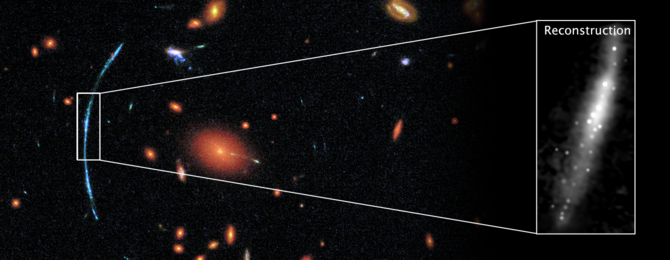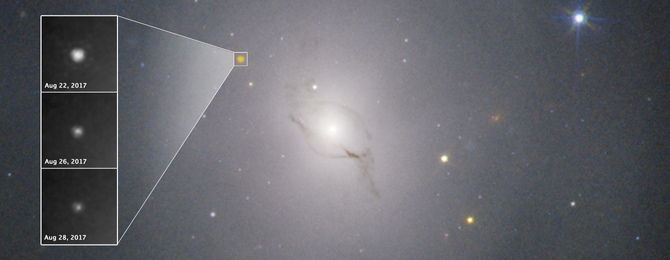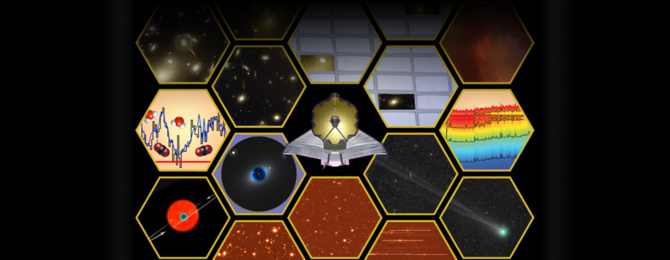Robby
Helper Bot
Hubble Pushed Beyond Limits to Spot Clumps of New Stars in Distant Galaxy


Gravitational lens helps reveal "fireworks" in the early universe
When the universe was young, stars formed at a much higher rate than they do today. By peering across billions of light-years of space, Hubble can study this early era. But at such distances, galaxies shrink to smudges that hide key details. Astronomers have teased out those details in one distant galaxy by combining Hubble’s sharp vision with the natural magnifying power of a gravitational lens. The result is an image 10 times better than what Hubble could achieve on its own, showing dense clusters of brilliant, young stars that resemble cosmic fireworks. (More at Hubble Site)


Gravitational lens helps reveal "fireworks" in the early universe
When the universe was young, stars formed at a much higher rate than they do today. By peering across billions of light-years of space, Hubble can study this early era. But at such distances, galaxies shrink to smudges that hide key details. Astronomers have teased out those details in one distant galaxy by combining Hubble’s sharp vision with the natural magnifying power of a gravitational lens. The result is an image 10 times better than what Hubble could achieve on its own, showing dense clusters of brilliant, young stars that resemble cosmic fireworks. (More at Hubble Site)
















